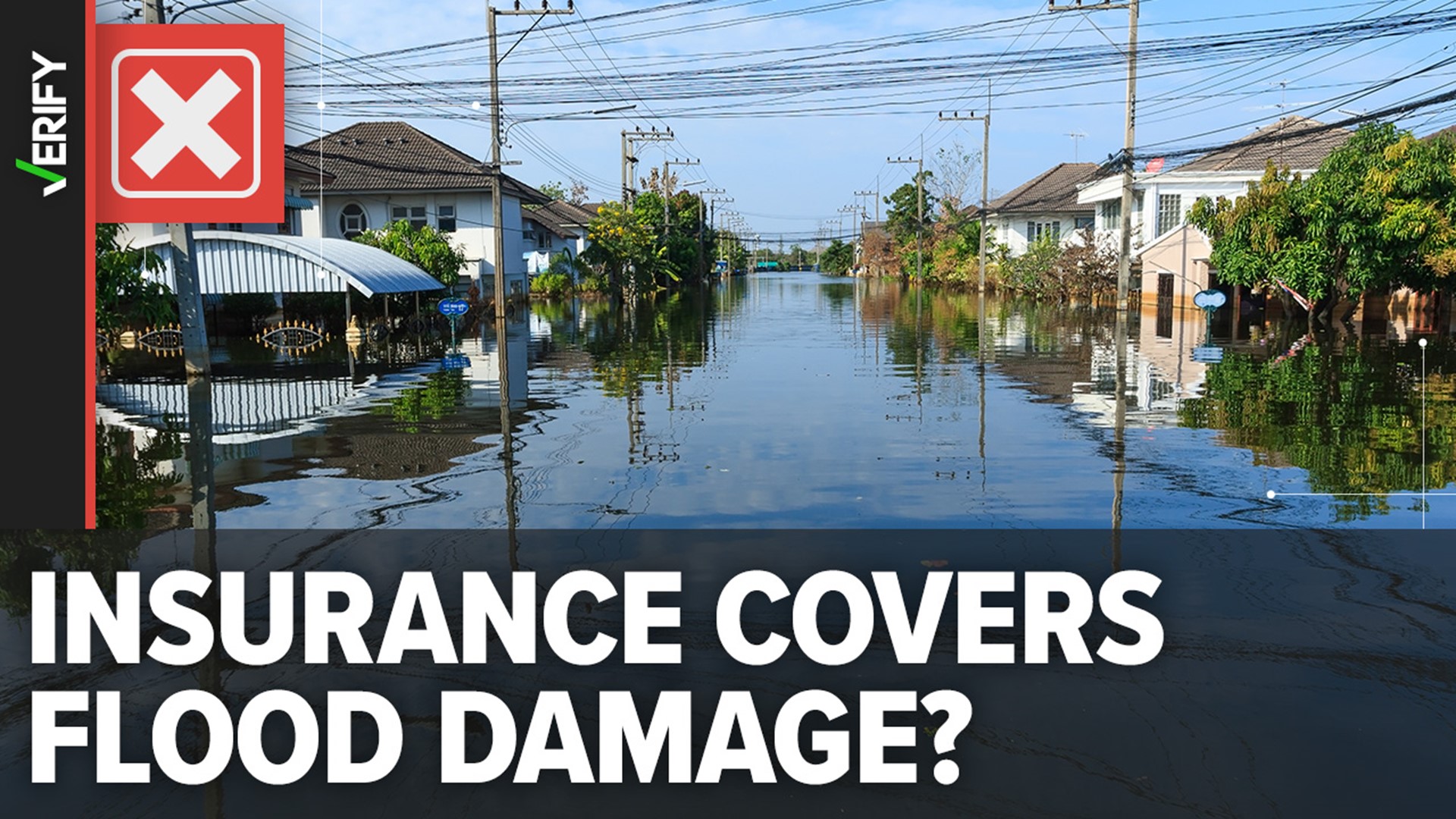Flooding is one of the most costly types of weather events. If you live in an area where strong storms are common, you might be wondering if your home and belongings are protected by insurance policies in the event of a flood.
Some people on social media claim that homeowners and renters insurance policies don’t typically cover flood damage from storms.
THE QUESTION
Do homeowners and renters insurance policies typically cover flood damage?
THE SOURCES
THE ANSWER
No, homeowners and renters insurance policies don’t typically cover flood damage. People can purchase a separate flood insurance policy from the federal government or a private insurer.
WHAT WE FOUND
Homeowners insurance provides people with certain financial protections in the event of a disaster or accident involving their home. Standard policies typically insure the home itself and personal belongings. Renters insurance policies typically cover the cost of replacing personal belongings, as well as accidents and injuries.
Standard homeowners and renters insurance policies usually cover water damage from sources inside the home, such as leaks or burst pipes, insurance companies Progressive and American Family Insurance say.
But these policies typically do not cover water damage from flooding, according to the Insurance Information Institute (III) and the Federal Emergency Management Agency (FEMA).
Instead, homeowners and renters can purchase a separate flood insurance policy from the federal government or a private insurer.
The National Flood Insurance Program (NFIP), which is managed by FEMA, contracts with insurance companies to offer flood insurance policies.
To purchase an NFIP policy, you can contact your homeowners or renters insurance agent. You can also use FEMA’s online tool to help find a flood insurance provider or call the NFIP at 877-336-2627.
NFIP policies are available to anyone living in one of the 23,000 communities throughout the United States that participate in the program, FEMA says.
But flood insurance through the NFIP isn’t the only option for homeowners and renters. Some private insurers also offer their own flood insurance policies, which may provide higher coverage than those issued by the NFIP, according to the III.
For example, NFIP policies cover up to $250,000 for the structure of your home and up to $100,000 for the contents within it. Private flood insurance policies, on the other hand, may cover up to $500,000 or more for the structure of your home and up to $250,000 for your belongings, Progressive explains.
Amica Insurance says there can be a 30-day waiting period before a flood insurance policy goes into effect. There are some exceptions, including for people purchasing a home, but it’s best not to wait to buy coverage until experts predict severe weather in your area.
For those who didn’t buy coverage ahead of a storm, FEMA also offers assistance to people who live in areas where the president has declared a disaster.
Florida’s emergency management division warns the average FEMA payout to people who live in the state following a disaster declaration is about $5,100, which may not be enough money to cover repairs. This compares to an average payout of about $29,000 for people who file flood damage claims through the NFIP.
Standard homeowners and renters insurance policies don’t typically cover earthquake damage, either. They will, however, generally cover losses from fire after an earthquake and any expenses you incur while living elsewhere during repairs.
Wildfire damage to your home and belongings is often covered by standard homeowners insurance policies, though specific coverage varies based on your location and policy.
Some standard homeowners insurance policies cover tornado damage, but you may need to purchase additional windstorm coverage if you live in a storm-prone area.

